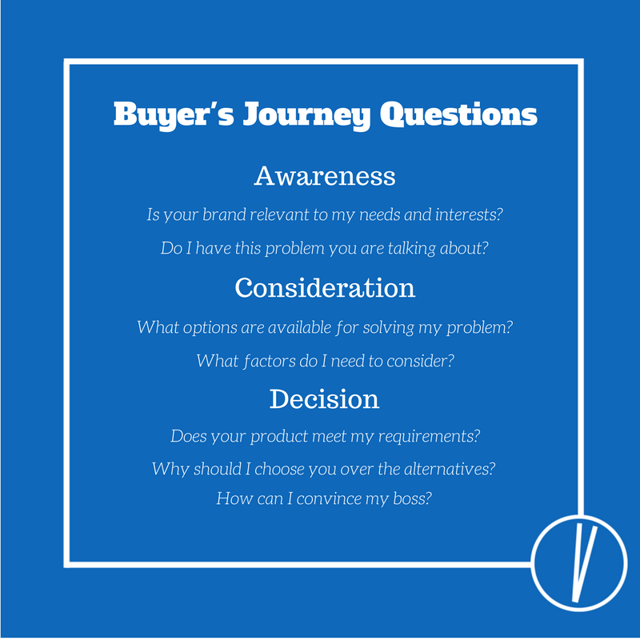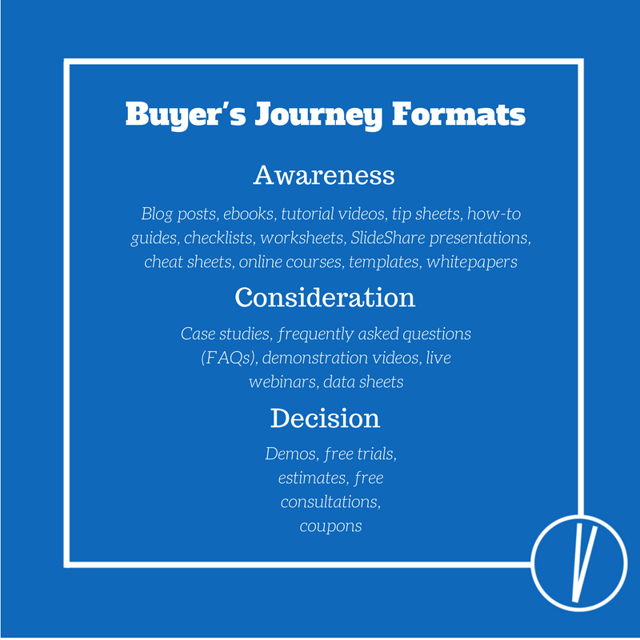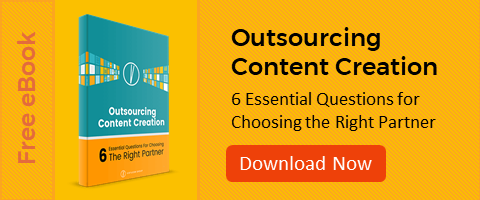Buyer’s journey, purchase path, digital marketing funnel – no matter what you call it, a visual representation and analysis of the stages your customers typically go through before purchasing your product is one of the best ways to keep your marketing and sales efforts on track. Think of it as the anchor that keeps your boat from drifting away from where you want to be.
Once you have a digital marketing funnel that’s tailored to your specific business and buyer personas, it can be used to align everything from your team operations to your content. Let’s take a closer look at how you can align your content to your buyer’s journey.
2 steps for making sure you have the right content
Making sure you have the right content – that reaches the right people, at the right time – is a two-stage process. First, you’ll want to audit your existing content, asking questions specifically related to your digital marketing funnel or buyer’s purchase path. Then, you’ll want to use the data you’ve collected to identify gaps and opportunities and plan out any new content using what you’ve learned.
Step 1: Content auditing – collecting the data
Content auditing can be used to analyze your content for everything from SEO to backlink opportunities to social media visibility. You might even consider making content alignment with your buyer’s journey part of a larger audit to make sure your content works for your business. But for this post, we’ll stick to the questions you’ll want to ask to align your content.
Before you start asking these questions, you’ll need to have a recording system, so the data can be analyzed and you can see clear action steps at the end of the process. Open up a new Excel spreadsheet, use your existing content calendar or download our Buyer’s Journey Content Audit Worksheet, then ask yourself these questions for every piece of content you’ve published:
- What question does it answer?
If your marketing funnel is complete, it should tell you exactly what your customers are asking themselves at each stage of the buyer’s journey. Look at each piece of content and ask yourself which of your buyer’s questions the content answers. This will help you identify which stage of the buyer’s journey the content falls under.

Awareness stage questions
If your prospect is asking themselves whether your brand is relevant to their needs and interests, they are probably just getting to know your company through a blog post or maybe your About Us page. They’re in the awareness stage of the buyer’s journey. And if your piece of content is intended to educate your prospects about a problem they may not even know they have, it’s awareness stage content.
Consideration stage questions
A prospect that’s aware that they have a problem or a need to fulfill will then move on to research all of the available solutions. What are my options? What factors do I need to consider? Consideration stage content should have the goal of helping the prospect move closer to making a decision regarding how they will solve their problem.
Decision stage questions
In the decision stage of the buyer’s journey, prospects will begin to consider whether you fulfill their specific requirements. They’ll want to know why they should choose you over your competition.
- What is the format?
After you know the questions your content addresses, it’s time to look at the format. Is it a blog post, an ebook or a whitepaper? Is it a list blog or a long-form blog? You’ll want to know what the current format is so you can decide later if it should be converted into a different format. It’s possible to have a piece of content that fully answers one of your buyer questions, but never reaches your audience because it’s in a format they won’t consume.
The graphic below shows typical formats for each stage of the buyer’s journey. But don’t think of them as set in stone. They’re much more fluid than that. You could easily have a blog post or whitepaper that’s a consideration stage piece of content or a live webinar that’s squarely in the educational awareness stage.

- What are the keywords?
Tracking keywords might seem like a task best suited to an SEO-focused audit, but knowing which keywords you’re targeting in each piece is important for aligning your content with your buyer’s purchase path, too. We often think of keywords as a tool for SERP ranking, but there is no such thing as a keyword without the people searching for them.
Step 2: Content planning – filling in the gaps and seizing opportunities
Now that you have collected data about your existing content, it’s time to look toward the future. You can now plan for additional content and any actions that need to be taken to keep your existing content relevant. Here are a few questions you might ask while looking at the data you’ve collected during your content audit:
- Are our customers asking any questions that we’re not answering?
Identify the gaps so you can add the right content going forward.
- How much of my content is in each stage?
The right content mix, not surprisingly, matches the digital marketing funnel. The breakdown you’re looking for is about 70% awareness, 20% consideration and 10% decision.
- Is this piece of content in the right format?
To answer this you’ll need to know how your customers like to get their information. If your blog posts are long and in-depth, but you know your audience prefers shorter, more visual content, you can try posting infographics, turning certain topics into list format posts or posting video along with a transcript. If your audience prefers in-depth articles, you might want to consider turning some of your blog topics into whitepapers or ebooks.
- Am I using the right keywords for my audience?
Attempting to rank for keywords is only useful if they’re keywords your target audience is searching for. Your keywords must be relevant to your buyer personas. And if your awareness stage content is trying to rank for keywords that people aren’t searching for until they’re in the decision stage, then your content may not be reaching people at the right time.
Keeping your content anchored to your inbound marketing strategy
Aligning your content with your buyer’s journey is an important process for keeping your content marketing efforts anchored to your inbound marketing goals. Too many businesses overlook it and find that their efforts aren’t producing the results they’d hoped for. With a little bit of data collection and someone who can ask the right questions about your content, you could be giving your content marketing ROI a big boost.
About Virtucom Group
Consistent business blogging yields results – more clicks, more subscribers and – ultimately – more conversions. Whether you’re writing an automotive blog, an accounting blog, a healthcare blog or a home renovation blog, blogging for business and content development are useful for any industry. Follow the content writers at the Virtucom Group blog as they share digital marketing tips and discuss website content writing services that can optimize your business blog.






